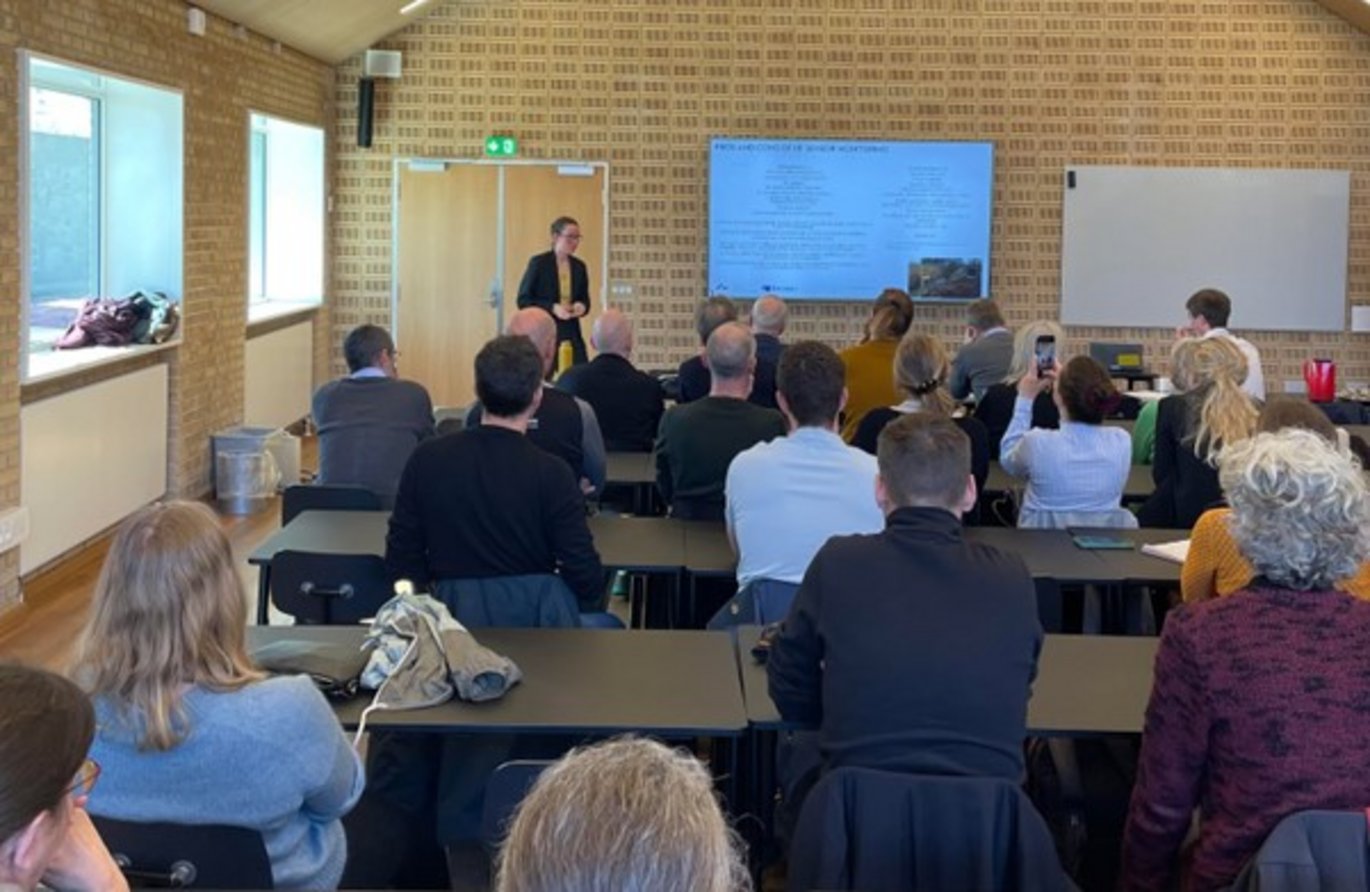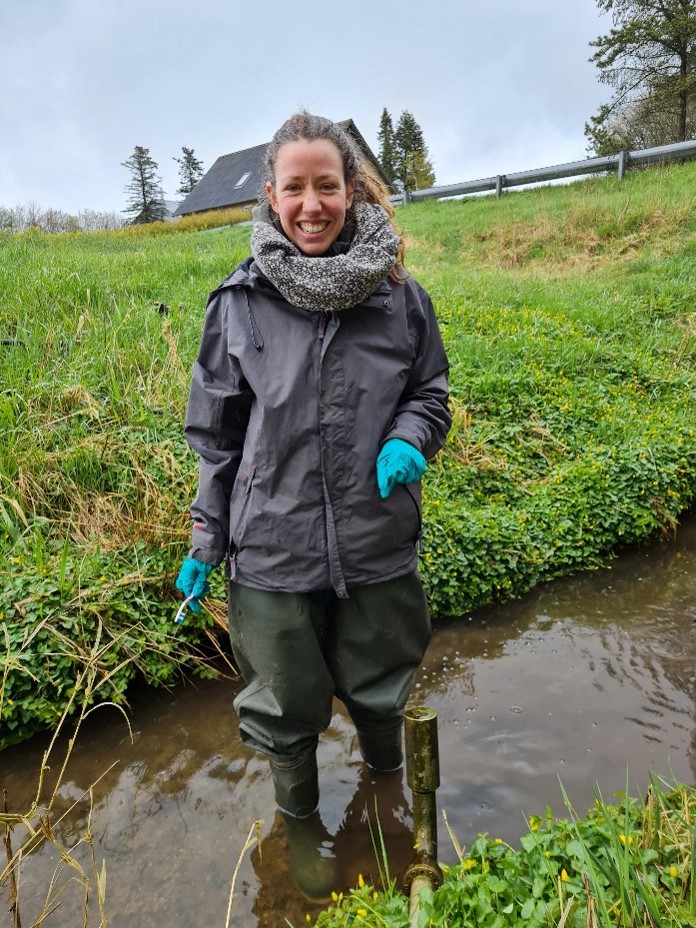Successful PhD Defense: New expert in high-frequency sensor monitoring in streams
On 1 April 2025, Sofie Gyritia Madsen van’t Veen, the first industrial PhD student in the Section for Catchment Analysis and Environmental Management, successfully defended her PhD thesis on future nutrient monitoring in streams using high-frequency sensor measurements.


Sofie has spent the last four years working as an industrial PhD fellow at the project ‘Sensor application for high temporal resolution monitoring in Danish headwater streams (SENTEM)’, a collaboration between the company Envidan and Aarhus University, funded by The Innovation Foundation Denmark. She holds a Master of Science in Geology and Geoscience with a specialization in water resources from the University of Copenhagen. Her research has spanned hydrology, catchment science, high-frequency sensor monitoring with in situ sensors, emission-based nitrogen regulation, nitrate leaching, SWAT modeling and targeted mitigation measures. Her current research focuses on surface water, high-frequency sensor monitoring with in situ sensors, QA-QC of high-frequency sensor data and nitrogen loads.
SENTEM
In SENTEM, Sofie has worked with high-frequency sensor monitoring in Danish streams, demonstrating the great potential of sensor monitoring. SENTEM explored new aspects and knowledge regarding the future use of high-frequency data collected with high temporal resolution using nitrogen and turbidity sensors in streams. The project provided valuable information on uncertainty regarding the accuracy of the national nutrient loads and water quality in streams, which is relevant for future emission-based regulation in Denmark and important for the Green Tripartite just adopted in Denmark in 2025. In the project, an innovative method for quality control of high-frequency sensor data was developed: SENTEMQC, a cost-efficient, smart and robust method useful for different types of sensor data from several aquatic environments. Guidelines for the use and quality assurance of high-frequency data in streams were also investigated during the project.
What is next for Sofie?
On 1 July 2025, Sofie will start working as a Post Doc at Aarhus University, Department of Ecoscience, on a new project funded by Independent Research Fund Denmark called ‘Aquatic emissions of nitrous oxide from agricultural nitrogen-losses (AQUA-N2O)’ together with Senior Researcher Joachim Audet, Researcher Katrien Bieger and Associate Professor Marcus Wallin from the Swedish University of Agriculture (SLU).
In her Post Doc, she will use the findings from SENTEM and continue working with high-frequency sensor data. The AQUA-N2O project addresses a critical challenge in understanding greenhouse gas emissions from agriculture, which is highly relevant to climate change and future nature protection. The project focuses on nitrous oxide (N2O) emissions resulting from nitrogen fertilizers that run off into water bodies. A significant portion of the fertilizer applied to agricultural land is not absorbed by crops, and this excess nitrogen seeps into the water environment. During transport, nitrogen can be converted into N2O, a greenhouse gas with severe climate impacts. Aqua-N2O aims to develop a model to assess indirect N2O emissions from nitrogen fertilizers. The model will be set up and validated using high-frequency sensor measurements from fields using high-frequency N2O and nitrate sensors. This N2O emission model is crucial for evaluating strategies to reduce agricultural N2O emissions in the future, both nationally and internationally, and contribute to a greener transition.
